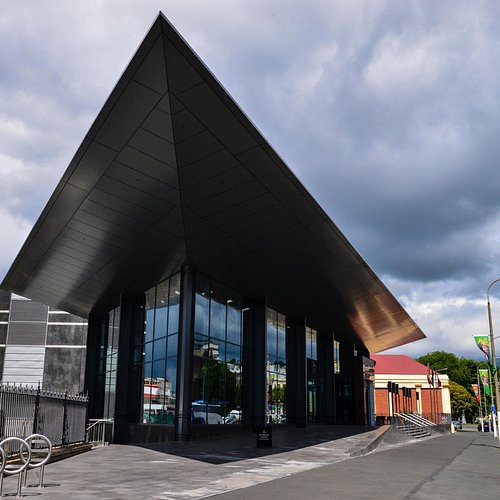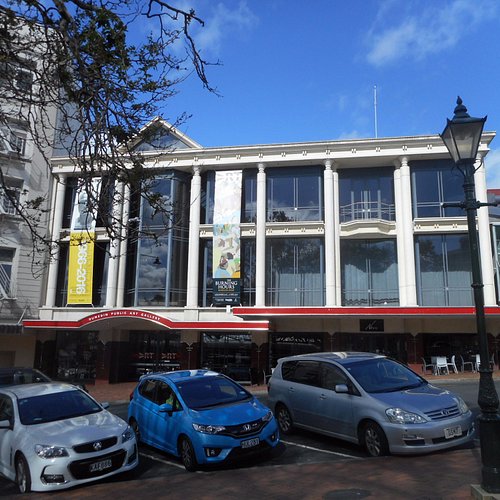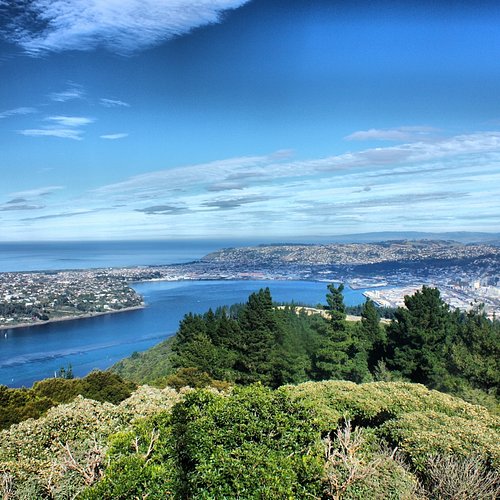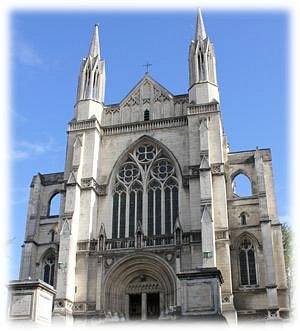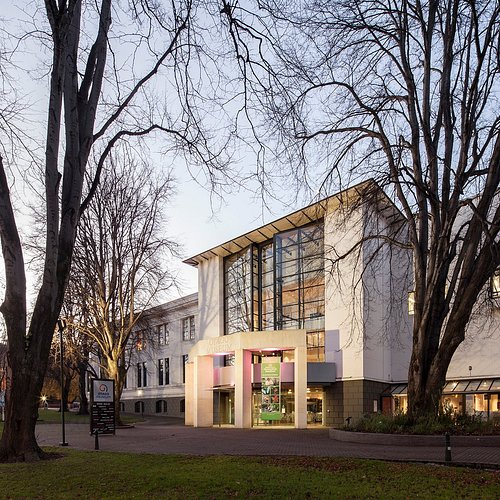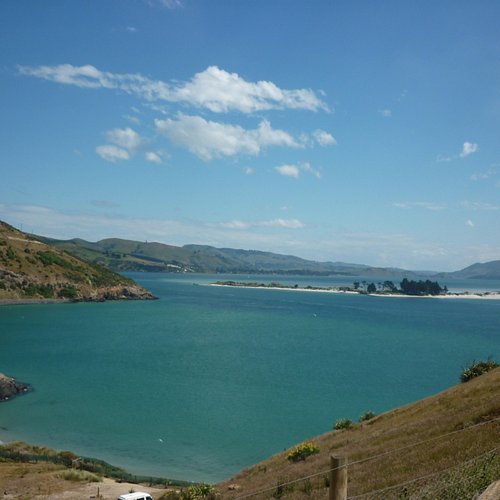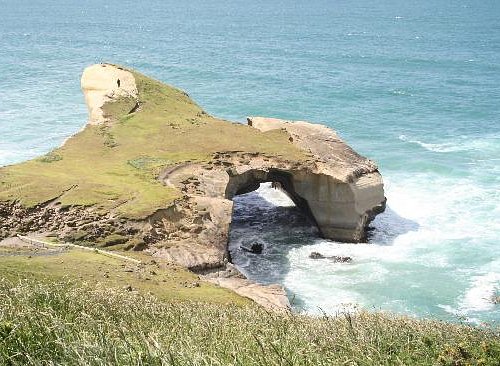10 Free Things to do in Dunedin That You Shouldn't Miss
Rare yellow-eyed penguins, fur seals and the world's only mainland albatross colony share residence in Dunedin, New Zealand's oldest city. When you're not watching wildlife, this South Island Otago Coast town also boasts impressive historic architecture from its days as a gold-rush mecca. Visit the 1906 Flemish Renaissance railway station or the country's largest center of higher learning, which resembles Glasgow University, thanks to the area's early Scottish settlers.
Restaurants in Dunedin
1. Toitu Otago Settlers Museum
Overall Ratings
5.0 based on 2,058 reviews
Toitū Otago Settlers Museum is a museum of social history dedicated to telling the story of the people of Dunedin and the surrounding area, whose character, culture, technology, art, fashion and transport shaped New Zealand’s first great city.Its fourteen themed galleries feature interactive displays and powerful narratives tracing the human history of the area, from the earliest settlers to the most recent arrivals.Captivating exhibitions are complemented by an on site shop and café. A well-equipped research centre and archive is available for those interested in genealogy and other aspects of local history.
Reviewed By Xin-Fang - Kuala Lumpur, Malaysia
The museum is located next to the Dunedin Railway Station. Free entry (charges may apply to special exhibition) but donations are appreciated. There is a gift shop and a coffee shop near to the reception counter. Toilets are available. We were given a map to show us the route of visit. Starting from Josephine, first train on the Dunedin-Port Chalmers Line in 1873, to the Dunedin Goes Digital (technology development and use in Dunedin and Otago), there are about 17 sections for one to explore. After the exit, it will lead to the Dunedin Chinese Garden (with admission fee). In the museum, there are several sections whereby touchable exhibits are provided to the visitors such as Mokihi, Wharerau, Cottage, Across the Ocean Waves, Roslyn No.1 electrical tram, penny-farthing and Tiger Tea trolleybus.
2. Sandfly Bay Track
Overall Ratings
5.0 based on 61 reviews
Always check the website for changes that might affect your trip.
Reviewed By zhuhai2007 - Christchurch, New Zealand
An easy drive to the car park and short walk to see NZ fur seals sunning themselves on the sand at low tide.
3. Dunedin Public Art Gallery
Overall Ratings
4.5 based on 269 reviews
The Dunedin Public Art Gallery is one of New Zealand's four major metropolitan art galleries. Established in 1884, the Gallery was New Zealand’s first Art Gallery and is renowned today for the richness of its historic collection and its close working relationship with major New Zealand artists. The Gallery houses a signifcant collection of New Zealand artworks covering the period from 1860 to the present. The collection also contains major holdings of historical European art, Japanese prints and the decorative arts. Historical works by renowned artists such as Turner, Gainsborough, Claude, and Machiavelli feature alongside the only Monet in a New Zealand collection and master works by Derain, Tissot, Burne-Jones and internationally acclaimed Dunedin artist Frances Hodgkins. The collection is fundamental to the Gallery’s exhibition programme, but many works of art are also sourced from other public and private collections in New Zealand and internationally. The Gallery presents a wide-ranging events programme of interesting lectures, floor talks, film and video screenings, performances and workshops. There are regular guided tours for key exhibitions or by arrangement. Located right in the heart of Dunedin, the Dunedin Public Art Gallery is within easy walking distance from a large number of hotels and on all major public transport routes. There are disabled facilities, the award-winning Nova cafe, a wonderful shop and free wi-fi in the Gallery foyer.
Reviewed By Wander636823
Good art gallery in a lovely building, well worth a visit, especially during Ralph Hotere Retrospective.
4. Signal Hill
Overall Ratings
4.5 based on 388 reviews
Reviewed By JnVSydney - Greater Sydney, Australia
A nice drive up the hill, full of winding turns. Once there, there was plenty of parking, it was a beautiful sunny day which made the views even more stunning, so peaceful and tranquil, It really puts Dunedin, into perspective. The is also a section for mountain bikers, something for all levels apparently. Definitely worth a visit if you have the time.
5. St. Paul's Cathedral
Overall Ratings
4.5 based on 242 reviews
Welcome to St. Paul's Cathedral, at the very heart of Dunedin City. A welcoming, vibrant community coming together to share the Word of God. The Cathedral Church of St Paul occupies a site in the heart of The Octagon near the Dunedin Town Hall and hence Dunedin. The land for St Paul's Church was given by the sealer and whaler Johnny Jones of Waikouaiti.The first parish church of St Paul was built on the site in 1862–1863. It was made of Caversham stone and could accommodate up to 500 people. Unfortunately it wasn't well constructed. The stone weathered badly and the tall spire was removed after just a few years. The man consecrated to be the first Bishop of Dunedin, but never enthroned, Bishop Henry Jenner, visited the Diocese in 1869. He officiated at St Paul’s and gave a lecture on church music illustrated by the St Paul’s choir. He is remembered as the composer of the hymn tune Quam dilecta. In 1871 Samuel Tarratt Nevill was elected Bishop of Dunedin. Initially he made no mention of the need for a cathedral for the diocese and it was not until the 1876 Synod that he broached the subject. The issue was ducked by forming a commission to investigate the whole matter. This commission later recommended that St Paul’s should become the mother church. However, Nevill favoured St. Matthew's Church, Dunedin, and the impasse remained. In the early 1880s the question was revisited, and again no resolution found. However, in 1894, 18 years after the issue was first raised, all sides agreed to the proposal for St Paul’s to become the cathedral. The Cathedral Chapter was formed and took up the responsibility for running the cathedral from 1895. Thomas Whitelock Kempthorne of Kempthorne Prosser Ltd was a generous supporter of the cathedral and a memorial stands inside. In 1904, William Harrop, a prominent Dunedin businessman died and left the bulk of his estate to fund a new Cathedral. However, release of the money was conditional on the Chapter raising £20,000 towards the cost of the building. Nevill threw himself into the effort, but it was not until 1913 that the £20,000 was raised and work could begin. The first in a series of plans and modifications were submitted by Sedding and Wheatly, an architectural company based in England. The author of the final design was Edmund Harold Sedding (1863–1921). The supervising architect in Dunedin was Basil Hooper (1876–1960).On 8 June 1915, the foundation stone of the new cathedral was laid. Huge foundations, large piers and a tremendous vaulted ceiling, the only one in stone in New Zealand, rose from the ground, forming the new Cathedral’s nave. Unfortunately, finances precluded construction of anything more. There was no money for the crossing or the chancel, as originally intended. In the end, it was resolved that a temporary chancel should be constructed, using material saved from the old St Paul’s. The new Cathedral was consecrated by Bishop Nevill on 12 February 1919.During the 1930s the Cathedral began to take up a role as a venue for public services, notably for the state funeral of Sir Frederick Truby King, the founder of the Plunket Society. Social work featured prominently at this time, with the synodsmen, vestry and church leaders all publicly opposed to the government’s Depression policies. The Cathedral administered a food bank and distributed food parcels for the citizens of Dunedin. Shortly after the Second World War, St Paul's suffered the loss of Dean Cruickshank, who moved to the Diocese of Waiapu, and of Professor Victor Galway. The latter, an organist and Professor of Music, had been immensely popular, attracting large crowds to his recitals and performances. He had also regularly broadcast his productions, paving the way for services to be aired on radio. In the 1950s the vestry made the important, though difficult, decision that it wouldn't complete the Cathedral to its original design. The dean suggested that ways be examined to link an extension to the existing structure, and the vestry agreed to investigate the possibilities. In 1966, the decision was made to build a new chancel. The plans had been drawn by Ted McCoy of the firm McCoy and Wixon. Construction began in earnest in December 1969. The old chancel was stripped and demolished and new columns began to rise from the debris. Construction and clearing up finished on Saturday 24 July 1971, and the Cathedral reopened the next day. The new chancel was modernist, as high as the existing vault, with tall windows reaching from the floor almost to the ceiling. The altar was free standing and the furnishings matched the walls. In 2004, the perspex cross was moved temporarily (and initially) to the crypt to accommodate a production of the bi-annual Otago Festival of the Arts. Finally, a decision was reached by the current Dean Trevor James to restore the perspex cross to the sanctuary, and it was returned to its position at the end of 2009. In 1989, the world's attention was on St Paul's when Dr. Penny Jamieson was consecrated and enthroned as Bishop of Dunedin. Bishop Penny was only the second woman bishop in the Anglican Communion and the first woman diocesan bishop in the world.[2] Her appointment had been paved by the hard work of two Cathedral women: Claire Brown, Assistant Priest at St Paul's from 1985 to 1989 and again from 2006 to the present, and Barbara Nicholas, Honorary Priest Assistant.As the world prepared for the change from 1999 to 2000, St Paul's invited people gathered to celebrate in the Octagon to come into the cathedral, have a moment of silence, light a candle and pray for the new year and the millennium. Over the course of a couple of hours thousands came in and lit a candle. People placed their candles in sand arranged in the shapes of alpha and omega in the chancel, reminding those present that Christ is the beginning and the end.St Paul’s Cathedral has an exceptional history of church music. Its globally recognised choir maintains a high standard of performance, and an extremely wide repertoire. Over the last two decades at least eight of its members have pursued professional vocal careers, singing in British cathedral choirs (recent former members currently hold appointments at Ely, Salisbury and St George’s Windsor). Several others – most recently Anna Leese - have gone on to international careers in opera. The choir has also contributed many members to the New Zealand Secondary Students’ Choir, the National Youth Choir and Voices NZ. The primary focus of the Cathedral Choir is to facilitate worship through its musical leadership, alongside the wider role of outreach within the Diocese and beyond. The Cathedral Choir is an auditioned choir, comprised of twenty-two highly skilled singers. It sings three times per week during the choir season (Candlemas to Christmas Day), and offers many other musical events, such as concerts and tours, throughout the year. Within the past year, the Cathedral Choir has featured on broadcasts for Radio New Zealand, alongside recordings for both national and local television. The choir sings a challenging repertoire from early plainsong to the work of contemporary composers. The Cathedral Choir, and all music at St Paul’s Cathedral, is run by the Director of Music, George Chittenden.The St. Paul's Cathedral organ was built in 1919 by Henry Willis III, in London and was installed the following year. In 1972, it was entirely dismantled and repositioned by the South Island Organ Company of Timaru. There are four manuals — great, swell, choir and solo. The organ of St Paul's has more than 3500 pipes and is often used for civic performances.
Reviewed By H6Ragz - Leicester, United Kingdom
St Pauls Cathedral is right in the centre of Dunedin, it is a lovely building and well worth a visit
6. Otago Museum
Overall Ratings
4.5 based on 1,124 reviews
Reviewed By geckopoo
We visited this place 12 years ago when on holiday with our kids, so excited to come back after all these years, and so relieved it is still as good as we remembered (if not better!). Always loved the Animal Attic, great homage to the old-fashioned classical museum collections complete with stuffed specimens in original glass cabinets, fantastic! We were staying just a block away so we just loved visiting the Animal Attic first thing in the morning as the museum opened when it was nice, quiet and oh so peaceful out there, just us and the animals, it was like having our own private museum. A floor down was the maritime gallery and natural history section, also our favourite areas - the moa skeletons on display are well curated, labels very informative and interesting. On the first floor is the special exhibits area which until April this year honours 130 years of collecting in New Zealand, very intriguing array of examples ranging from the heart of a great white shark to a petrified rat collection to gold coins from the Elizabethan period. This is a very modern and spacious museum yet it still has a rather conservative and traditional feel - we love it! The technology is well used to enhance and inform without being too gimmicky and glitzy. Good toilets, water fountains and rest areas on all floors too. Best of all, it’s free. Well done, Dunedin for having this excellent museum in your midst!
7. Otago Peninsula
Overall Ratings
4.5 based on 2,056 reviews
The Otago Peninsula is a long, hilly indented finger of land that forms the easternmost part of Dunedin, New Zealand. Volcanic in origin, it forms one wall of the eroded valley that now forms Otago Harbour. The peninsula lies south-east of Otago Harbour and runs parallel to the mainland for 20 km, with a maximum width of 9 km. It is joined to the mainland at the south-west end by a narrow isthmus about 1.5 km wide.
Reviewed By kiwikeen2020 - Gold Coast, Australia
We did a bus tour visiting sights around Otago Peninsula - Larnach Castle, Sandfly bay, Royal Albatross colony and Penguin Place and Penguin cafe for lunch - we all had a lovely time and beautiful sunny day which made it even better.
8. Dunedin Beach
Overall Ratings
4.5 based on 145 reviews
Reviewed By RaejonRae - Levin, New Zealand
Awesome drivetoday around the Peninsula,the albatross colony back around to Dunedin city. Awesome day out with beautiful views
9. Dunedin Botanic Garden
Overall Ratings
4.5 based on 1,150 reviews
The Dunedin Botanic Garden is New Zealand's first botanic garden and holds the status of six star Garden of International Significance. ArbNet, the global network for tree-focussed professionals, has accredited the Botanic Garden as level III. The Camellia Collection is rated as a Garden of Excellence by the International Camellia Society. The Botanic Garden celebrated its 150th anniversary in 2013, marking its position as New Zealand's first botanic garden. It occupies 30.4 hectares in North Dunedin at an altitude of 25 - 85 metres above sea level. The Garden has hill views from sunny lawns, more than 6,800 plant species and the song of wild native bellbirds, wood pigeons and tui. Its wide range of horticultural and botanical collections includes roses, the herbaceous and perennial borders, a rock garden, New Zealand native plants and four hectares of Rhododendron Dell with more than 3,000 rhododendrons. An important aspect of The New Zealand Native plant collection is the cultivation of rare and endangered native plant species. The geographic plant collections are an expression of the Victorian penchant for collection and growing plants from all around the world and displaying them in related groups. This collection has plants from temperate climates of North Asia, the South, Central and North Americas, Southern Africa, the Himalayas and the Mediterranean.
Reviewed By jansX3336SJ - Matlock, United Kingdom
There are so many different areas of interest that my husband and I spent the whole day in Dunedin Botanic Garden. There was an area of native plants, African garden, Mediterranean garden, rhododendron dell, rose garden, herb garden, area of mature trees, hot house and vast rockery with many interesting and beautiful plants. At one point, we also came across an aviary of native birds. Lunch in the little cafe was a pleasure too as was our visit to the onsite shop where we were served by friendly staff; all in all, it was a perfect day!
10. Tunnel Beach Track
Overall Ratings
4.5 based on 709 reviews
Always check the website for changes that might affect your trip.
Reviewed By PaulM223 - Christchurch, New Zealand
The closer you get to Tunnel Beach, the more amazing it gets...The track to the tunnel is well-formed and easily negotiated, but it is steep and a little slippery in places, so good walking shoes/boots recommended. The scenery of the elements carved cliffs and rocks makes the walk very interesting and you emerge from the little tunnel into a sheltered cove where crashing waves meet solid rock on a beautiful white sand beach. There are numerous hazards like uneven surfaces, waves, cliffs and crevasses...take good care and keep children close. Plenty of photo opportunities and spectacular scenery abounds.

